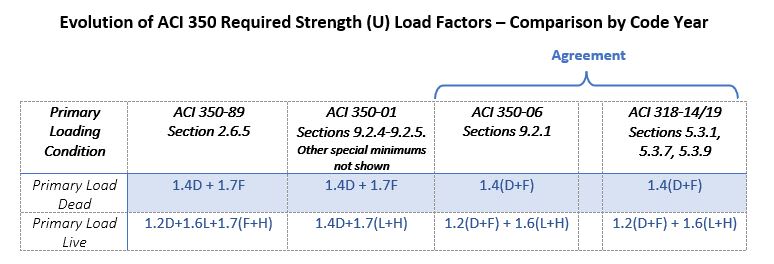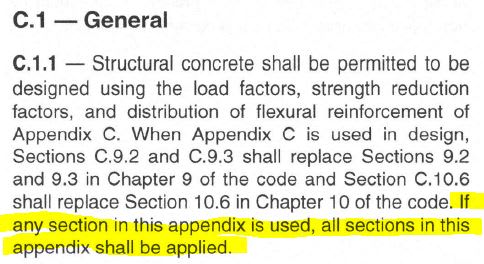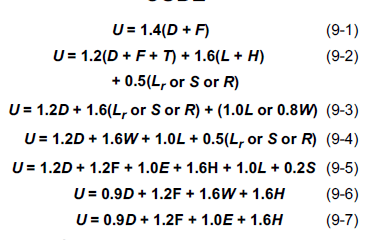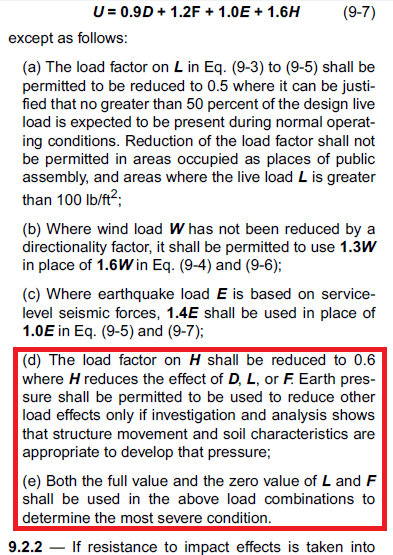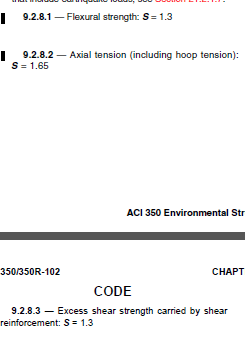Dear All,
Section 8 of ACI 350 states the ultimate load combinations for watertight structures design as below :
1.4D+1.7L
1.4D+1.7L+1.7H
1.4D+1.7L+1.7F
0.9D+1.7H
0.9D+1.7F
Section 9 of ACI 350 states the ultimate load combinations for watertight structures design as below :
U = 1.4(D + F) (9-1)
U = 1.2(D + F + T) + 1.6(L + H) (9-2)
+ 0.5(Lr or S or R)
U = 1.2D + 1.6(Lr or S or R) + (1.0L or 0.8W) (9-3)
U = 1.2D + 1.6W + 1.0L + 0.5(Lr or S or R) (9-4)
U = 1.2D + 1.2F + 1.0E + 1.6H + 1.0L + 0.2S (9-5)
U = 0.9D + 1.2F + 1.6W + 1.6H (9-6)
U = 0.9D + 1.2F + 1.0E + 1.6H
what service load combinations should i consider? Could not find in ACI 350.
Can I consider the ultimate combinations that are listed in section 9 instead 8 for underground tank design.?
Thank you,
Section 8 of ACI 350 states the ultimate load combinations for watertight structures design as below :
1.4D+1.7L
1.4D+1.7L+1.7H
1.4D+1.7L+1.7F
0.9D+1.7H
0.9D+1.7F
Section 9 of ACI 350 states the ultimate load combinations for watertight structures design as below :
U = 1.4(D + F) (9-1)
U = 1.2(D + F + T) + 1.6(L + H) (9-2)
+ 0.5(Lr or S or R)
U = 1.2D + 1.6(Lr or S or R) + (1.0L or 0.8W) (9-3)
U = 1.2D + 1.6W + 1.0L + 0.5(Lr or S or R) (9-4)
U = 1.2D + 1.2F + 1.0E + 1.6H + 1.0L + 0.2S (9-5)
U = 0.9D + 1.2F + 1.6W + 1.6H (9-6)
U = 0.9D + 1.2F + 1.0E + 1.6H
what service load combinations should i consider? Could not find in ACI 350.
Can I consider the ultimate combinations that are listed in section 9 instead 8 for underground tank design.?
Thank you,

